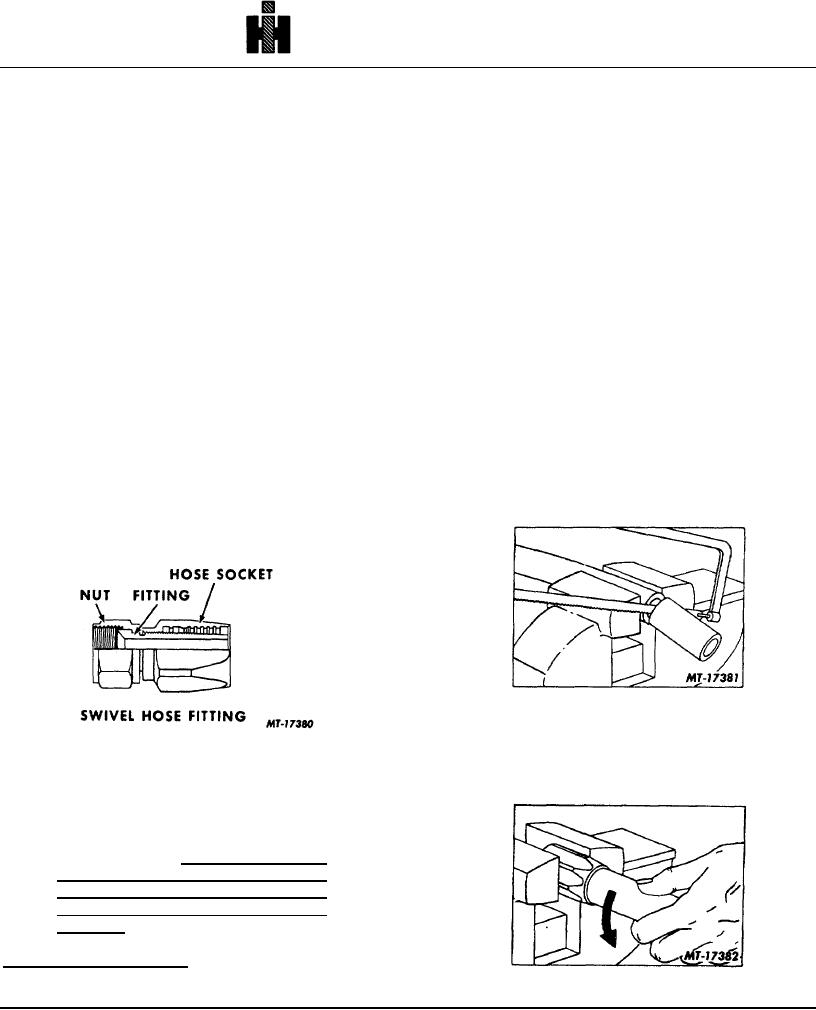
TRUCK SERVICE MANUAL
BRAKES-AIR
CHAPTER XII
FLEXIBLE HOSE, NYLON TUBING, RIGID PIPING AND FITTINGS
DESCRIPTION
When the assembly procedure in making up a hose
Rigid (copper) tubing and fittings of different sizes
is being performed, each step should be finished
have been used to connect different air devices in the air
carefully to assure proper connections at the hose ends.
system. However, flexible hoses and nylon tubing is
1. Remove the hose fitting and nut from socket and
gaining increasingly wide usage in place of copper piping
hose. Fig. 1 illustrates the swivel hose fitting.
on IH vehicles.
So that the swivel nut and fitting can be removed
FLEXIBLE HOSE
from the hose and socket assembly, install a
Any size or length of hose can now be made locally
pipe adapter in the swivel nut and tighten it,
for service requirements.
locking the swivel joint assembly (nut and fitting).
The swivel nut and fitting can now be turned out
The hose is constructed of a seamless synthetic
of the hose using a wrench.
rubber lining or tube reinforced with one fabric braid of
high tensile steel wire which is covered with a synthetic
2. Separate the hose from the socket.
rubber-impregnated oil-resistant fabric braid.
3. Repeat steps 1 and 2 for the removal of second
These hoses can be used for air systems and air
end.
brake systems, except air line from air compressor to air
4. Use a fine-tooth hack saw to cut hose to desired
reservoir, where the temperature will exceed 300
length (Fig. 2). Use care in supporting the hose
degrees F.
so as not to crush or damage the hose during
The fittings used at the ends of the flexible hose are
the cutting operation.
of the swivel type, such as that shown in Fig. 1. The
swivel end permits one end of the hose to be
disconnected and not disturb the complete hose.
5. Lightly clamp the hose socket in a vise.
6. Screw end of new hose into socket until hose
Fig. 1. Flexible Hose Fitting
bottoms in fitting (turn hose counterclockwise).
Then back off hose 1/4 turn (Fig. 3).
CAUTION: Do not try to mix different
type hoses and hose fittings. In some
cases the hose and hose fittings may
seem to fit, but the ends may not hold up
under pressure. If in doubt as to the
identification of the hose and/or fittings
which are being repaired, use new IH
components to make up a new hose
assembly.
Hose Assembly Instructions
Fig. 3
165

